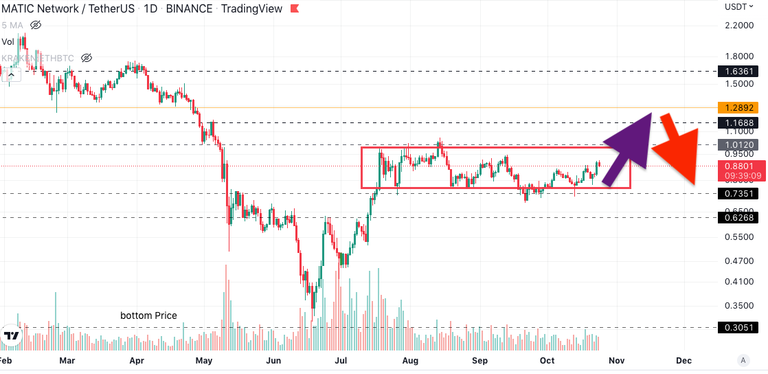News from the Polygon network, I analyze Graphics, possible Targets.
%2020.09.06.png)
Great optimism in the Matic community. The long-awaited hard fork aimed at boosting Polygon's performance went live today at block 38,189,056
%2012.24.28.png)
Polygon News
There was some Polygon news last week. Firstly, Polygon performed the Delhi hard fork on Jan. 17, upgrading its proof-of-stake consensus in order to improve its performance. One of the most important changes will be decreasing the rate of change for the base gas fee from 12.50% to 6.25%.
New update analyzed below the Polygon story.
Next, Polygon announced that it was partnering with BitGo to allow holders to earn rewards by staking MATIC, the native token of the Polygon network.
History of Polygon
Polygon was first released in 2017 to provide the much-needed scaling solution for Ethereum.
Since then, users and developers have enjoyed faster performance and lower fees, with more than 2.31 billion transactions processed. With thousands of decentralized applications (DApps), including some of the largest Web3 projects like UniSwap and Aave, being built on top of it.
Polygon Update
Earlier today, the team confirmed that the hard fork would proceed as scheduled, noting that no action will be required from MATIC holders as it will be activated automatically.
The update, "Polygon Delhi Fork", seeks to achieve two key goals:
- reduce gas spikes during transactions
- improve the finality of the transaction by reducing the reorganization of the chain.
In a blog post last week, the polygon team noted that the update would change the base fee from 8 to 16. The base fee is the minimum gas needed for a transaction to be included in a new block. Although gas prices normally work most of the time, when the chain experiences high demand, base gas rates can experience exponential spikes.
According to the team, "the expectation is that the exchange rate of the gas base rate will fall to 6.25% from the current 12.5% to smooth out severe fluctuations in gas prices."
And while gas will continue to rise during peak demand, it will be more in line with how Ethereum gas dynamics work now, the team noted, adding:
“The goal is to smooth out spikes and ensure a smoother experience when interacting with the chain. ”
%2011.47.16.png)
Regarding the second goal of the update, the team noted that addressing on-chain reorganizations will reduce the duration of sprints from 64 to 16 blocks. As a result, a single block producer will be able to continuously produce blocks for a much shorter time (around 35 seconds), much less than the current time (around 128 seconds).
Graphic Analysis
Today we see how the accumulation channel breaks upwards
%2012.21.17.png)
This channel has been brewing since July 2022.
I already did an analysis in October of this mega accumulation channel where it made a false breakout (frustrated by the general fall of the crypto market)
%2019.34.20.png)
In said post, I analyzed that the price we saw that it has remained in the accumulation range after a correction to 33 cents and a price recovery until it reached the dollar in July 2022.
%2019.53.59.png)
%2011.20.48.png)
From that moment on, it begins to form an accumulation range with a break in November.
The price is pulled back by the general fall of the market caused by the collapse of FTX.

Later we see how the price recovers 1 dollar while bitcoin continues in correction, which indicates strength in the price of Matic.
%2019.42.05.png)
Matic headed for 2 dollars. (Medium Term analysis)
If we consider the accumulation range of a pennant, we can measure the up to the pennant and project how far the price could reach 2 dollars in the medium term.
%2019.34.20.png)
Another analysis tells us that it could double the channel where the price has moved. This would bring the price up to $1.5 in a shorter timeframe.
%2019.52.14.png)
Finally I have marked possible resistances up to the target of 2 dollars
%2019.35.48.png)